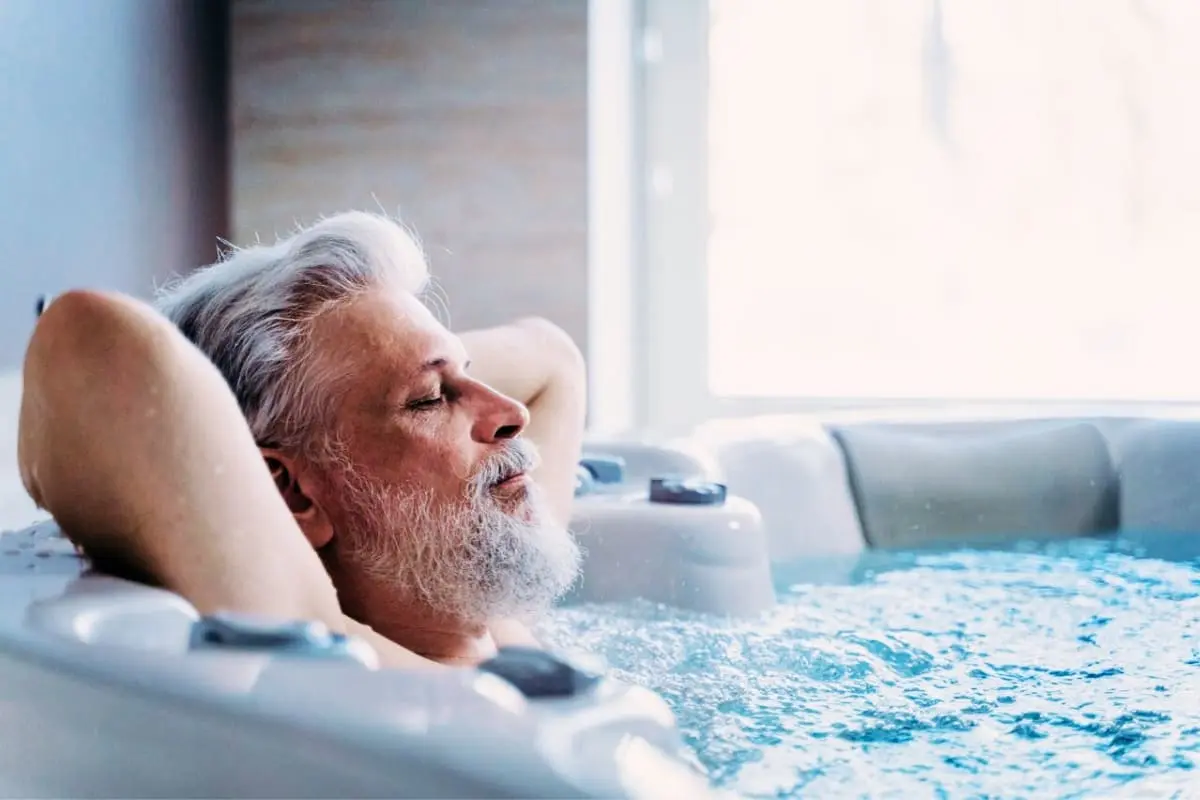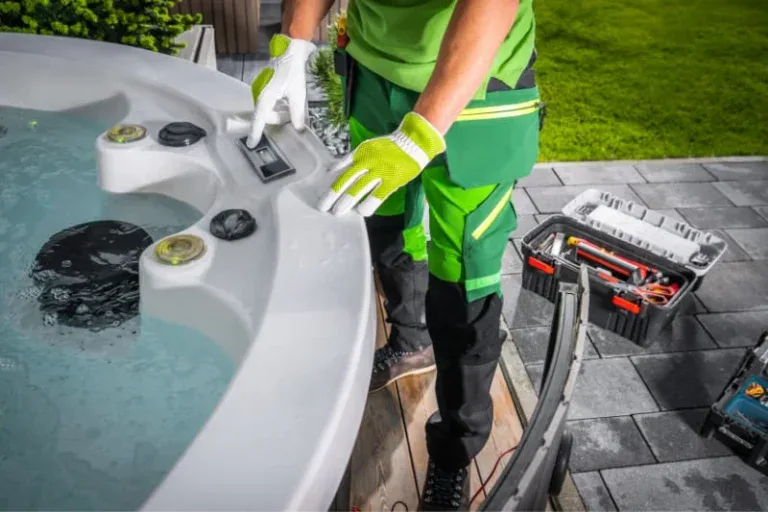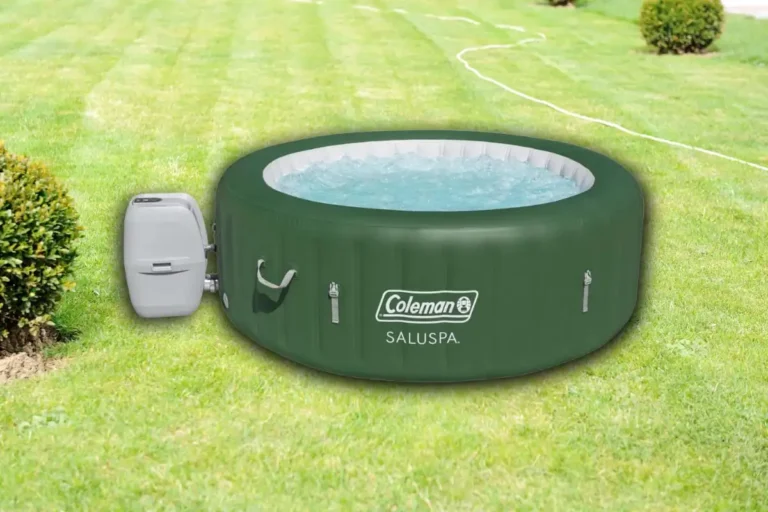Hot Tub Temperature 101: Safety, Comfort & Savings

Finding the right hot tub temperature is crucial for both comfort and safety. While you might think cranking up the heat will give you the best experience, science and safety regulations suggest otherwise.
Key Takeaways
- Hot tub temperatures should never exceed 104°F (40°C) due to safety regulations
- Most adults prefer water between 100-102°F for optimal relaxation
- Different users need different temps: lower for children (95°F max) and pregnant women (100°F max)
- Seasonal adjustments help maximize comfort (higher in winter, lower in summer)
- Each 1°F reduction in temperature saves about $0.13 per day in energy costs
The perfect hot tub temperature varies based on who’s using it, when, and why. As hot tub enthusiasts, we’ve tested the full temperature range to bring you this complete guide.
Whether you just bought your first spa or want to optimize your existing setup, we’ll help you understand everything from safety limits to seasonal adjustments so you can enjoy the perfect soak every time.
Table of Contents
Maximum Temperature Regulations: Why 104°F Is the Limit
The 104°F maximum temperature for hot tubs isn’t just a suggestion—it’s based on serious safety research and backed by regulation. In December 1979, the U.S. Consumer Product Safety Commission (CPSC) issued advisory #79-071 after documenting 10 deaths that year, including three alcohol-related drownings in hot tubs heated to approximately 110°F.
The CPSC warned that water temperatures above 106°F could raise body temperature to dangerous levels, potentially causing heat stroke and creating life-threatening conditions even for healthy adults. Their recommendation of 104°F as the maximum safe temperature was quickly adopted across the industry.
Today, this limit is enforced through manufacturing standards. All UL-certified hot tubs must include:
- Temperature controls with a maximum setting of 104°F (40°C)
- Clear temperature displays, visible before entering
- Safety features preventing temperature override
Manufacturers that modify controls to exceed 104°F risk losing their UL certification, which is why you won’t find commercially available hot tubs that go beyond this limit. (Source: NSF International)
Finding Your Ideal Hot Tub Temperature
While 104°F represents the upper safety limit, the perfect temperature for most people falls between 100-102°F. This range balances therapeutic benefits with comfort for average adult soakers.
The best way to find your ideal setting is through experimentation:
- Start at 100°F for your first session
- Increase or decrease by 1 degree for subsequent soaks
- Pay attention to how your body responds
- Consider how long you plan to soak (lower temps for longer sessions)
Your preferred temperature might change based on your mood, physical needs, or even time of day. Many users enjoy higher settings (102-104°F) for muscle recovery after workouts and lower settings (98-100°F) for relaxation sessions.
A 2023 study published in Medicine & Science in Sports & Exercise found that immersion at 104°F (40°C) created optimal conditions for muscle recovery following exercise-induced muscle damage. This temperature reduced force development decline by 7.1% at 24 hours post-exercise compared to cooler water. 1

Different Temperature Needs for Different Users
For Children
Children’s bodies warm up faster than adults and can’t regulate temperature as effectively. Follow these guidelines:
- Maximum temperature: 95°F
- Maximum soak time: 5-10 minutes
- Always provide adult supervision
- Use designated “cool down” seats where available
For Pregnant Women
Pregnant women should take special precautions with hot tub use:
- Maximum temperature: 100°F
- Consult your doctor before hot tub use
- Limit soaking time to 10 minutes
- Exit immediately if feeling dizzy or overheated
The CPSC specifically warns that temperatures above 102°F during pregnancy might cause fetal damage, especially during the first trimester.
For Seniors and Those With Health Conditions
People with heart disease, high blood pressure, or other medical conditions should:
- Start with lower temperatures (98-100°F)
- Consult with a doctor before hot tub use
- Stay hydrated before and during soaking
- Exit slowly to prevent dizziness from blood pressure changes
Seasonal Hot Tub Temperature Adjustments
Your ideal hot tub temperature will likely change with the seasons:
Winter Settings
During cold months, many users prefer temperatures between 102-104°F. The stark contrast between cold air and hot water creates a refreshing experience. Higher settings also help maintain temperature when the cover is removed in freezing weather.
Summer Settings
When outdoor temperatures climb, consider reducing your hot tub to 95-99°F. This range still provides therapeutic benefits while feeling refreshing rather than overwhelming on hot days. Some owners even go as low as 90°F during heat waves for a cooling dip.
Spring and Fall
These transition seasons often work best with middle-range temperatures (100-102°F) as day and night temperatures fluctuate more dramatically.
Keep in mind that your hot tub will lose heat faster in winter and retain heat longer in summer, affecting both energy consumption and heating time.

Health Benefits of Different Temperature Ranges
Hot tub temperatures provide different health benefits depending on your setting:
100-102°F: Balanced Therapy
This range offers the best combination of benefits:
- Improved circulation
- Muscle relaxation
- Stress reduction
- Joint pain relief
Research shows that immersion in water at this temperature increases blood flow as vessels dilate, helping deliver oxygen and nutrients to damaged tissues while flushing away metabolic waste.
Many users report that regular soaking at this temperature helps with sleep quality. As your body warms in the hot tub and then cools afterward, this temperature shift mimics your body’s natural pre-sleep cycle, helping signal that it’s time for rest.
102-104°F: Maximum Therapeutic Effect
The higher end of the temperature spectrum provides:
- Deep muscle penetration
- Maximum circulation boost
- Enhanced pain relief
- Faster muscle recovery
A 2025 study in Frontiers in Pain Research found that hot water immersion sufficient to raise core body temperature by 1°C (using temperatures around 102-104°F) resulted in a 32% reduction in pain scores for fibromyalgia patients.2
This temperature range is particularly effective for:
- Post-workout recovery: Research from 2023 showed that 104°F immersion reduced late-phase muscle force decline by 7.1% at 24 hours post-exercise compared to lower temperatures. [Sautillet et al. (2024)]
- Arthritis relief: The Arthritis Foundation notes that warm water therapy works by reducing the force of gravity that’s compressing the joint while providing 360-degree support for sore limbs.
- Stress hormone reduction: Higher temperatures can help decrease cortisol levels, your body’s primary stress hormone, promoting a deeper sense of relaxation.
95-99°F: Extended Soaking
Lower temperatures allow for:
- Longer soak times
- Exercise capabilities
- Less cardiovascular stress
- Better for summer use
This range is ideal if you plan to spend 30+ minutes in your hot tub or want to perform light exercises or stretches.
Lower temperature settings can still provide therapeutic benefits without raising your core body temperature too quickly. This makes them perfect for:
- Gentle stretching sessions: The buoyancy of water supports your body weight, reducing stress on joints, while the warmth helps increase flexibility.
- Meditation and mindfulness practice: Comfortable temperatures allow for longer sessions without overheating, creating an ideal environment for mental relaxation.
- Social gatherings: When hosting friends or family, moderate temperatures accommodate different preferences and allow everyone to enjoy longer soak times together.
Many physical therapists recommend this lower temperature range for rehabilitation exercises, combining the supportive properties of water with a gentle warmth that doesn’t overtax the cardiovascular system.
For alternative heat therapy options, check out my sauna vs. hot tub article.

Energy Efficiency and Temperature Management
Your hot tub temperature setting directly affects your energy bill. Each degree makes a significant difference:
Cost Per Degree
For a standard 400-gallon hot tub, each 1°F reduction in temperature saves approximately (Source: Aqualivingstores):
- 0.976 kWh per day
- About $0.13 daily at average electric rates
- $3.90 monthly per degree
- $46.80 annually per degree
This means lowering your hot tub from 104°F to 99°F could save almost $20 per month.
Smart Temperature Management
To maximize efficiency:
- Use a quality cover: A well-fitted cover can reduce heat loss by 22-35%
- Set a schedule: Lower temperature when not in use
- Windbreak installation: Reduces heat loss in exposed areas
- Use economy mode: Most modern hot tubs have energy-saving settings
- Maintain clean filters: Proper water flow improves heating efficiency—see our hot tub cleaning guide for best practices
Some hot tubs with smart controllers like the SmartTub system can adjust heating patterns based on your usage habits, saving up to 25% on energy costs through predictive heating and usage pattern recognition.
(Source: Jacuzzi.com)
Also Read: Best Inflatable Hot Tubs
Troubleshooting Hot Tub Temperature Issues
If your hot tub isn’t maintaining the right temperature, check these common issues:
Won’t Reach Set Temperature
- Filter needs cleaning: Restricted water flow affects heating
- Cover problems: Damaged or waterlogged covers lose insulation value
- Heating element failure: May need professional replacement
- Inadequate power supply: Voltage issues can limit heater function
Temperature Fluctuations
- Sensor problems: Dirty or damaged sensors give false readings
- Circulation issues: Air locks or flow restrictions cause temperature swings
- Control panel calibration: Digital thermostats may need recalibration
- Weather extremes: Very cold conditions may overwhelm heating capacity
For persistent issues, sometimes draining your hot tub completely can resolve temperature problems.
For serious heating issues, consult with a professional technician rather than attempting DIY electrical repairs.
Also Read: How to Get Rid of a Hot Tub
Conclusion
Finding your ideal hot tub temperature involves balancing safety, comfort, and therapeutic needs. While 104°F stands as the maximum safe limit based on decades of research and regulation, most users find their sweet spot between 100-102°F.
Remember to adjust for different users, seasonal changes, and your specific health goals. Children, pregnant women, and those with certain health conditions benefit from lower temperatures and shorter soaking times.
By understanding the science behind hot tub temperatures and following the guidelines we’ve outlined, you’ll enjoy safer, more comfortable, and more energy-efficient hot tub experiences year-round.
Resources
- Sautillet, B., Bourdillon, N., Millet, G. P., Lemaître, F., Cozette, M., Delanaud, S., Ahmaïdi, S., & Costalat, G. (2024). Hot water immersion: Maintaining core body temperature above 38.5°C mitigates muscle fatigue. Scandinavian journal of medicine & science in sports, 34(1), e14503. https://doi.org/10.1111/sms.14503 ↩︎
- Chadwick, A. L., Shi, C., McMillan, M., Miller, J., Hu, J., & Geiger, P. C. (2025). The impact of a heat therapy intervention on pain and fibromyalgia symptoms in patients with fibromyalgia: a pilot study. Frontiers in pain research (Lausanne, Switzerland), 6, 1526491. https://doi.org/10.3389/fpain.2025.1526491 ↩︎

“Become a Sauna Expert Overnight!”
Grab Your “FREE” Sauna E-book NOW!
Get your hands on the ultimate sauna manual. From history to DIY setups, our free guide has it all.

As a Chartered Accountant turned sauna enthusiast, I bring a unique blend of analytical skills and hands-on experience to the world of heat therapy. With over a decade dedicated to researching and testing sauna products and practices, I’ve developed a deep understanding of this field. A the founder of HomeInDepth.com, I provide reliable, easy-to-understand information on all aspects of saunas. My goal is to guide you through every step of your sauna journey, offering meticulously researched, unbiased advice to help you make informed decisions and create your perfect sauna experience. I’m always happy to hear from sauna lovers like you—feel free to leave questions or share your own tips in the comments below so we can learn together. Contact me on:







2 Comments